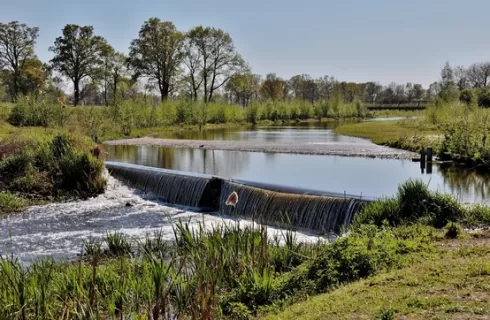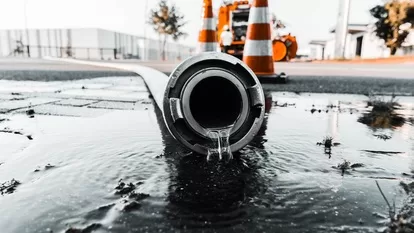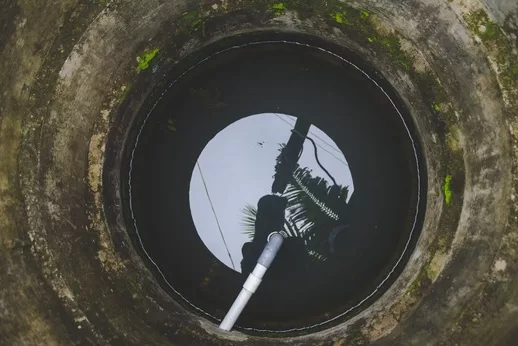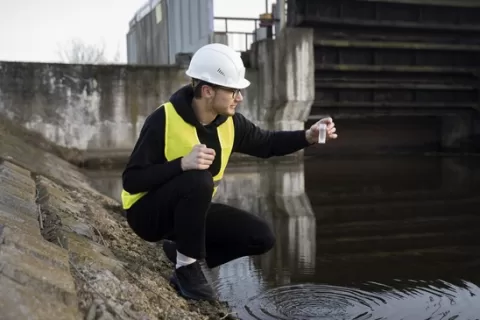Underground water systems are the silent backbone of cities, ensuring a reliable water supply, effective sanitation, stormwater management, and flood prevention—all without disrupting surface space. In modern urban construction, these systems are essential for supporting high-density development while safeguarding public health and protecting buildings from structural damage caused by excess moisture. More than just infrastructure, they integrate with smart city technologies, optimizing water conservation and enhancing disaster resilience. Given the complexity of these systems, consulting a plumbing professional is crucial when planning or upgrading underground water networks. Their expertise ensures the system meets regulatory standards, maximizes efficiency, and is built to handle the demands of growing urban populations.
Most discussions on underground water infrastructure focus on functionality, but there’s a broader perspective to consider: these systems don’t just move water—they shape economic futures. A city’s ability to expand depends on its underground infrastructure. If a water system can’t support rapid development, urban growth slows, leading to water shortages and construction delays. At the same time, aging or inefficient underground networks can quietly drain municipal budgets. A single leak in a major pipeline can waste millions of gallons of water, increasing operational costs and forcing premature infrastructure replacements. Meanwhile, well-maintained systems save cities billions in long-term repairs and ensure a stable water supply for businesses and residents alike.
The impact extends to real estate as well. Neighborhoods with outdated or unreliable water systems often see declining property values due to risks like flooding, sinkholes, and water restrictions. Investing in modern underground infrastructure is not just about preventing crises—it’s about enabling sustainable economic growth and climate resilience at scale.
Engineering the Future of Underground Plumbing
A well-designed underground water system goes beyond basic pipes and drainage; it’s a complex network engineered for efficiency, adaptability, and durability. Key components include water supply lines, sanitary sewers, stormwater drainage, backflow prevention devices, and smart monitoring sensors that detect leaks and optimize water flow. Advanced trenchless piping solutions minimize excavation damage, while permeable drainage systems enhance groundwater recharge and reduce runoff.
The best systems are not static—they evolve alongside the city. Climate change is intensifying extreme weather events, making adaptability a necessity. Modular and expandable designs allow cities to adjust their water systems as demand shifts. Innovations such as self-repairing polymer coatings and bioengineered bacteria that seal small cracks are pushing infrastructure into the future, reducing the need for constant manual repairs. Meanwhile, AI-powered sensors analyze water usage patterns, identify potential leaks before they escalate, and adjust flow based on real-time weather forecasts. If an underground system remains static, it’s already outdated.

How Poor Plumbing Undermines Urban Growth
A failing underground water system can trigger a chain reaction of urban issues. Poor drainage leads to flooding, sinkholes, and road collapses, while aging pipes increase maintenance costs and water loss. Improperly planned sewer systems create contamination risks, harming both public health and the environment. Over time, these issues make urban development more challenging and costly, deterring investment and limiting a city’s ability to grow.
But beyond the physical consequences, failing water infrastructure creates deeper socioeconomic divides. Low-income communities are often the last to receive upgrades, forcing residents to deal with lead contamination, frequent pipe bursts, and unreliable service. At a broader level, inadequate water management restricts the potential of smart city technologies. Without an integrated underground network, flood monitoring, traffic systems, and energy grids cannot operate at full efficiency. Additionally, areas with poor drainage or water shortages face higher insurance costs, making real estate development less attractive.
The reality is that failing underground water systems don’t just disrupt daily life—they widen economic inequality and hold back urban progress. Cities that fail to modernize risk falling behind in sustainability, efficiency, and long-term growth.
Managing Groundwater for a Resilient City
Groundwater mismanagement is an often-overlooked threat to urban infrastructure. Excessively high water tables exert pressure on building foundations, leading to cracks and basement flooding, while over-pumping can cause land subsidence, sinking buildings, and damaging roads. Many cities focus primarily on surface-level flood control, but real solutions often lie underground. Sustainable drainage systems (SuDS), retention basins, and permeable surfaces help regulate groundwater levels, preventing excess flooding while reducing the strain on underground structures.
Looking ahead, cities must treat groundwater as a strategic asset rather than an afterthought. Advanced water banking techniques allow for the storage of excess water during heavy rains, ensuring reserves are available during droughts. Additionally, subsurface water temperature regulation can provide natural cooling or heating for buildings, cutting down on energy costs and reducing the burden on electrical grids. By managing groundwater proactively, cities can become more flood-resistant, energy-efficient, and water-secure all at once.
Emerging Technologies in Underground Water Systems
Innovations in materials and technology are transforming underground plumbing, making systems more resilient, efficient, and sustainable. High-density polyethylene (HDPE) and corrosion-resistant composite pipes far outlast traditional materials like iron and clay. Smart sensors and AI-driven analysis are detecting leaks before they escalate into major problems, while trenchless installation methods like cured-in-place piping (CIPP) allow for underground repairs without disrupting city streets.
But the future isn’t just about stronger materials—it’s about creating water networks that function like living ecosystems. Bioengineered fungi are being developed to prevent pipe corrosion, forming a protective barrier inside pipes. Graphene-based membranes, which are 200 times stronger than steel, could revolutionize leak prevention. Meanwhile, decentralized water treatment systems within pipes could purify and filter water in real-time, reducing reliance on centralized treatment facilities.
These advancements aren’t just improving infrastructure; they’re redefining how cities interact with their underground water networks. The next step in plumbing innovation isn’t about adding new pipes—it’s about transforming the pipes themselves into self-sustaining, adaptive systems.
Overcoming Challenges in Building Water Networks
Despite technological advancements, cities still face major obstacles in upgrading underground water systems. Many rely on century-old piping that is costly and difficult to replace. Urban congestion makes installing new plumbing a logistical nightmare, with limited space to navigate around existing infrastructure. Soil instability, fluctuating groundwater levels, and strict regulatory requirements further complicate construction projects.
However, the biggest roadblocks often aren’t technical—they’re bureaucratic. Legal red tape slows down projects, outdated policies prevent innovation, and coordinating underground work with other infrastructure projects can delay upgrades for years. Even with the best planning, unexpected underground conditions—such as hidden aquifers or unstable soil—can derail timelines and budgets. Overcoming these challenges requires more than engineering expertise; it demands smarter policies, AI-driven excavation planning, and streamlined regulatory processes.
Integrating Plumbing into Sustainable Urban Design
Water infrastructure plays a crucial role in sustainable city planning, yet it’s often overlooked in favor of energy and transportation initiatives. Leak-resistant pipes, real-time monitoring, and rainwater harvesting systems reduce waste and increase efficiency. Smart stormwater management, including bioswales and retention ponds, helps mitigate urban heat islands and prevents flash flooding. By integrating underground water solutions into green initiatives, cities can lower utility costs, reduce environmental impact, and build resilience against climate change.
The future of underground water management will go beyond simple distribution. Heat recovery from wastewater is already being used to warm buildings in cities like Vancouver, while underground stormwater reservoirs could help cool urban environments. Some cities are even experimenting with underground water storage that doubles as hydroponic food production zones, merging water infrastructure with agriculture. The best urban planning doesn’t separate water, energy, and food systems—it connects them.

The Future of Urban Water Systems
The next decade will bring smarter, more resilient underground plumbing, with AI-driven networks predicting and preventing leaks, modular self-repairing pipes extending infrastructure lifespans, and underground reservoirs optimizing stormwater reuse. Cities that embrace these innovations will cut costs, future-proof their infrastructure, and create more sustainable urban environments.
But the future may not rely on traditional pipes at all. Decentralized water grids could function like the internet, dynamically distributing water without massive underground networks. Subsurface desalination plants could convert seawater underground before it even reaches cities. Microbial-powered filtration systems could clean water directly inside pipes. The revolution in underground water systems isn’t just about better infrastructure—it’s about transforming the very nature of water management itself.


